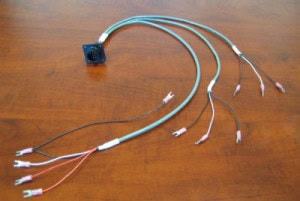
When selecting an electrical cable for the project, various important factors need to be considered such as the type of application, load bearing capacity, etc. Beyond these primary considerations, the wiring expert should understand the difference between a stranded and solid cable, and their contribution to the project.
A solid cable features a single thick conductor made of solid metal, which tends to be more rigid. The conductor is usually made of copper. A stranded cable is composed of several small conductor strands (typically 7) that are twisted or grouped together to form a large wire.
Stranded vs. Solid Cable
Below are three arguments for stranded vs. solid cable.
- Flexibility: Cable flexibility is an important factor when considering cables for an assembly project. A solid cable with a single metal wire is not bendable, so is perfect for applications that don’t require bending. Stranded cables consist of a large number of small individual strand conductors grouped together. Hence, stranded cables can withstand over-bending and over-flexing.
- Applications: Solid cables are used for structured wirings as well as semi-permanent and permanent installations. Other applications of solid cables include long distance cable horizontal and backbone cable runs, wall jacks, HD applications, and power over Ethernet (PoE) applications.
Generally, stranded cables are used in patch panels for workstations. Since they are flexible, they can be used for applications, where over-flexing is common.
- Attenuation: Stranded cables are recommended for short distances because they possess higher attenuation than solid cables. Attenuation is a term for a reduction in signal strength – analog and digital. Sometimes, attenuation is a consequence of long distance transmission.
Stranded cables are usually recommended for applications 20 feet underground.
Whether you select a stranded cable or a solid cable, proper installation is key to its performance.

